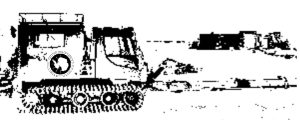Preface
Our pistenbully plodded along a snow bank on the fringe of the frozen Ross Sea, a vector 5 miles due west of McMurdo Station, Antarctica. We were transporting a two-man dive crew who were tasked that day with collecting specimens under the sea ice. To my right, I spied saw a lone Adéle penguin, running up a snow-covered terrace. Flippers out wide, flailing, it reminded me of a two-year old child running with abandon from his mother in the supermarket. At the crest of the hill, the penguin flopped onto its belly and slid 20 feet to the bottom, where it awkwardly stood up and began to flail up the next hill. We continued along for another 30 minutes. No talking. It wasn’t possible because the noise of the tracked vehicle required us to keep ear plugs in, while the glare of the sun off the snow-covered ocean required us to keep our goggles on. Standard procedure was to fall asleep any time you had to ride more than 20 minutes.
We stepped out of the vehicle, but left it running. You never turn off a vehicle when off-base in Antarctica. It could be fatal if you couldn’t get it started again. Besides, the US government pays the gas bill to let it idle. We pulled our fur-lined, government issue red parka hoods over our stocking hats to combat the wind and marched through the snow in our rubber bunny boots towards the ice shelter which was sat upon the frozen sea. Once inside we lit the propane heater and gathered round the three-foot wide ice hole the staff had augured at the beginning of the season. The sea ice was 10 feet thick in this section, relatively shallow by Antarctic standards. My job was to help the divers gear up. First the dry suit, then the ninja turtle gloves, then the O2 tanks. Finally, a couple of jabs at the thin layer of ice on the hole, and wait a few minutes before “pushing them in”. Fighting ocean current posed the biggest threat to our divers, but a close second was the leopard seal. Any activity at the hole might draw their attention and attract them from their underwater hunting expeditions. By happenstance, they sometimes use the dive hole to come up for oxygen. We had to make sure there weren’t any in the area. We helped the divers into the water and most of our job was done for the day so we huddled around the propane heater and waited. Under the water, the divers worked quickly to collect specimens requested by the cadre of scientists waiting back on station. I think today was supposed to be starfish. A professor on sabbatical from Vanderbilt was investigating reproductive rates in Antarctic waters.
I begin to wonder – how did we get here? Not me and the team to the ice shanty, but rather, how did we as a country, as a collection of nations, get to the point where billions of dollars are spent on scientific discovery and investigation in Antarctica? And why the hell does it matter why fish’s blood doesn’t freeze in sub-freezing temps, or what ice cores drilled from 100 feet deep into a glacier can tell us about snowfall a half a million years ago? The naïve, twenty-five-year-old me asked that question. The academic me sees the reality that getting to this point in our modern age of knowledge could not have been achieved alone. Others will come after us. We have the luxury of more than 500 years of scientific discovery, empirical investigation, and philosophical theorizing that has happened since the Renaissance. If we are studying reproduction rates of starfish, it is only because someone before us first discovered differences in species, and explored what cells were, or how reproduction in echinoderms transpires. And then some brilliant scholar discovers how reproductive rates is a symptomic metric of ocean health which has implications for all oceans and all people whose lives are impacted by the sea.
This cannot be achieved in one lifetime. It takes decades and centuries to formulate the critical mass needed in each field to make lasting advancements. The exponent required to describe how much knowledge has been created in the last half-millennium is staggering. We thought the earth was flat, we thought flies auto-generated from meat, and how many folk tales and superstitions have we debunked in that time with solid scientific inquiry into previously un-explained phenomenon? Even at the earliest stages of the Age of Enlightenment, the greatest thinkers of the time knew that they could not advance the understanding of the modern world by themselves. That is why we were there.
Robert Lloyd
US Antarctic Program 2005


